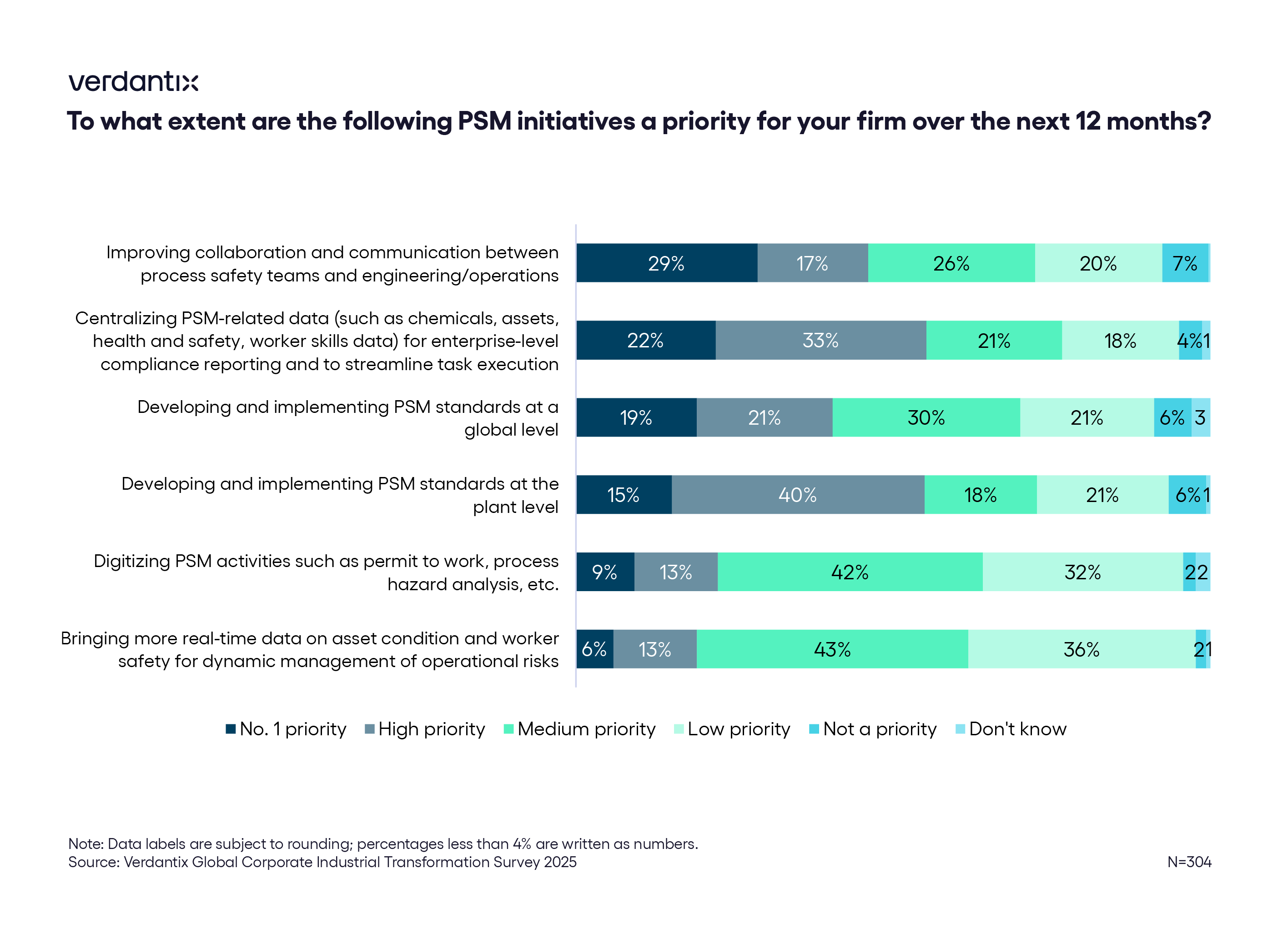From Process Safety Silos – To Synergy With Asset Integrity Management
With a large number of heavy-industry assets nearing decades of use – and approaching retirement – the risk of failure is an ever-present concern for both operations teams, who prioritize availability, efficiency and uptime; and process safety teams, who want to mitigate asset failure to reduce the risk of major safety incidents and regulatory non-compliance. Accordingly, the 2024 Verdantix industrial transformation global corporate survey reveals that 46% of decision-makers in industrial firms believe that improving collaboration and communication between process safety teams, engineering and operations is a ‘number 1’ or ‘high’ priority in their process safety management (PSM) programmes.
An evident area of overlap for both disciplines is mechanical integrity – one of the 14 PSM US Occupational Safety and Health Administration (OSHA) elements. Although the responsibility for designing and maintaining material inspections and safety testing programmes sits with the PSM function, it is the operations team that is tasked with executing these, meaning that PSM leaders often lack insight into the day-to-day operational difficulties of inspecting and maintaining safety-critical elements (SCEs). Another crucial aspect of asset integrity management is risk-based inspections (RBIs). These use material corrosion data, failure predictions and failure modes and effects analysis (FMEA) to determine the risk of asset failure, leveraging this to allocate priority to inspections. For PSM leaders, this constitutes a much more efficient, cost-effective and safer inspection programme than calendar-based checks.
Responding to this demand, traditional PSM software providers are expanding their capabilities to cover asset integrity management, enhanced by real-time condition data and failure predictions. Prometheus’s Platform, for example, provides a single entry point to both its asset performance management (APM) and PSM solutions, using data from process historians to forecast failures, and consequently to recommend inspection frequencies. Similarly, Cenosco, an asset integrity management provider, offers corrosion management and RBI functionality alongside hazard and operability (HAZOP), layers of protection analysis (LOPA) and safety instrumented function (SIF) studies, and bowtie analysis, to jointly drive inspection efficiency and maintain safety-critical barriers.
Concurrently, safety software providers such as Enablon and Sphera are prioritizing ease of integration with computerized maintenance management systems (CMMS) and enterprise asset management (EAM) software, to centralize work orders, work permits, asset data and safety data, to streamline task execution and align with inspection priorities.
While asset integrity management serves to bridge the gap between APM and PSM, data and task centralization are key to enable organizations to reduce corrosion risk, align inspection priorities with operational realities, and foster stronger synergies between teams – ultimately reducing risk, improving safety and ensuring compliance.
For more information on process safety and asset integrity, read the following Verdantix reports: Green Quadrant: Process Safety Management Software 2023 and Product Benchmark: Asset Reliability And Integrity Management Capabilities Of APM Software (2024)

About The Author

Sayanh Alam
Industry Analyst





